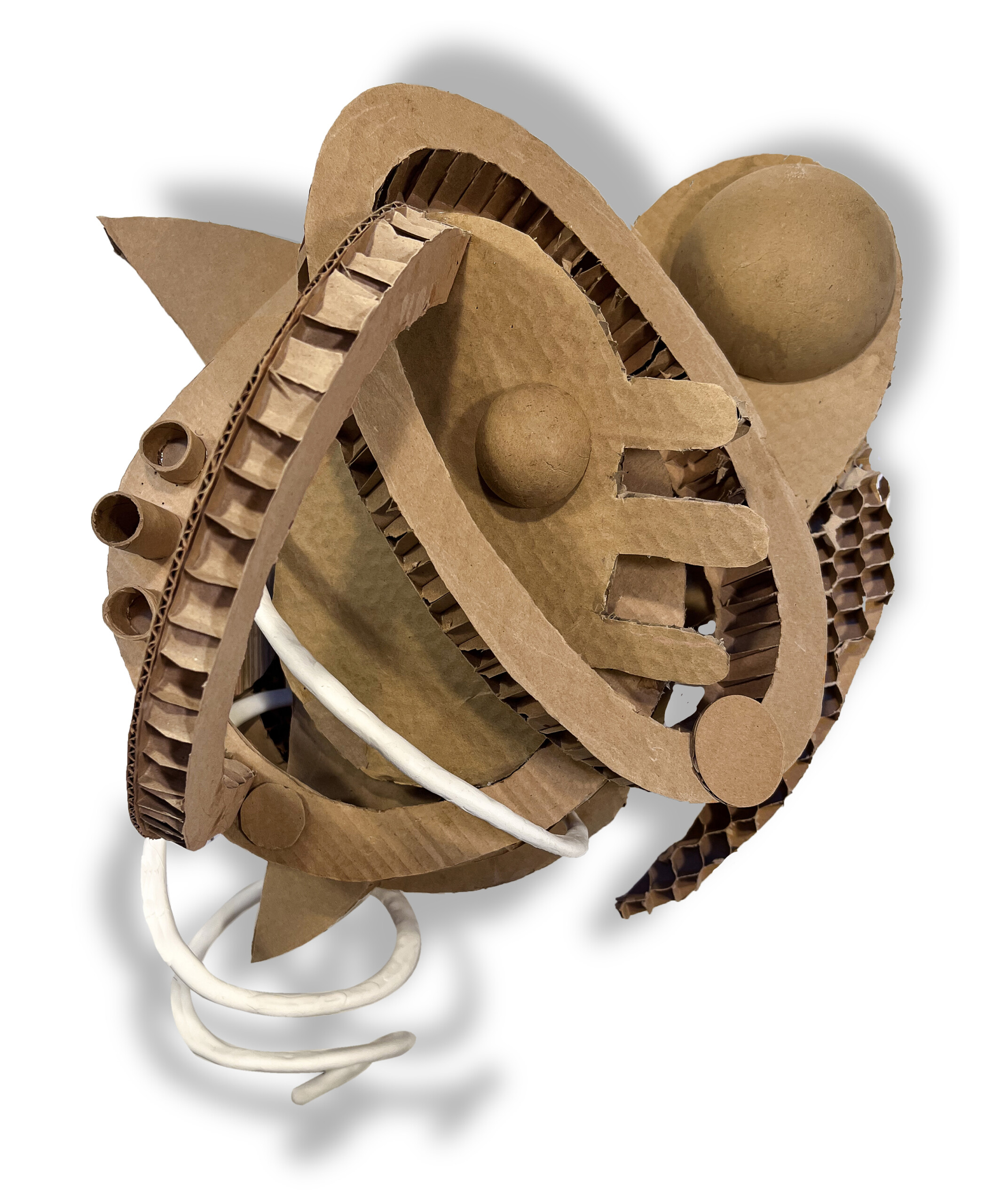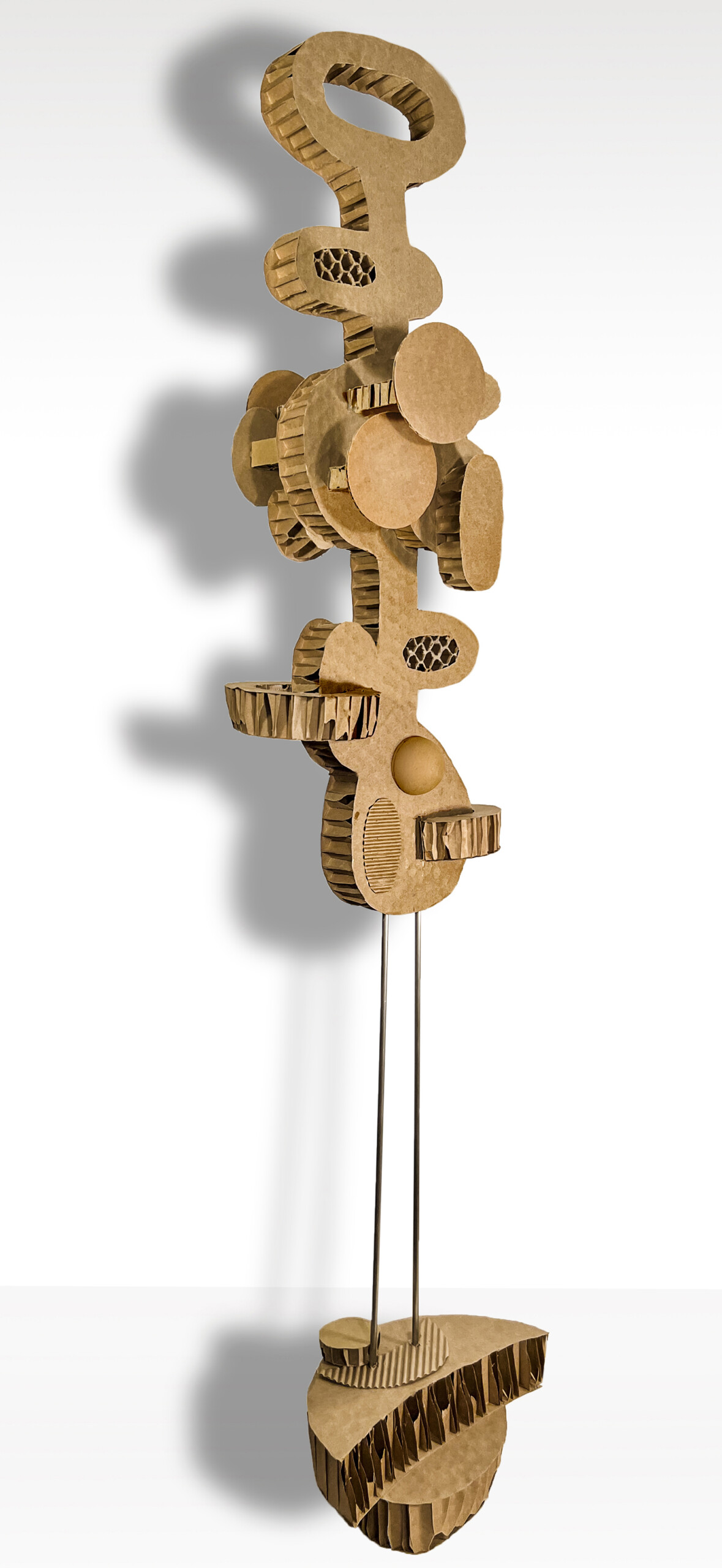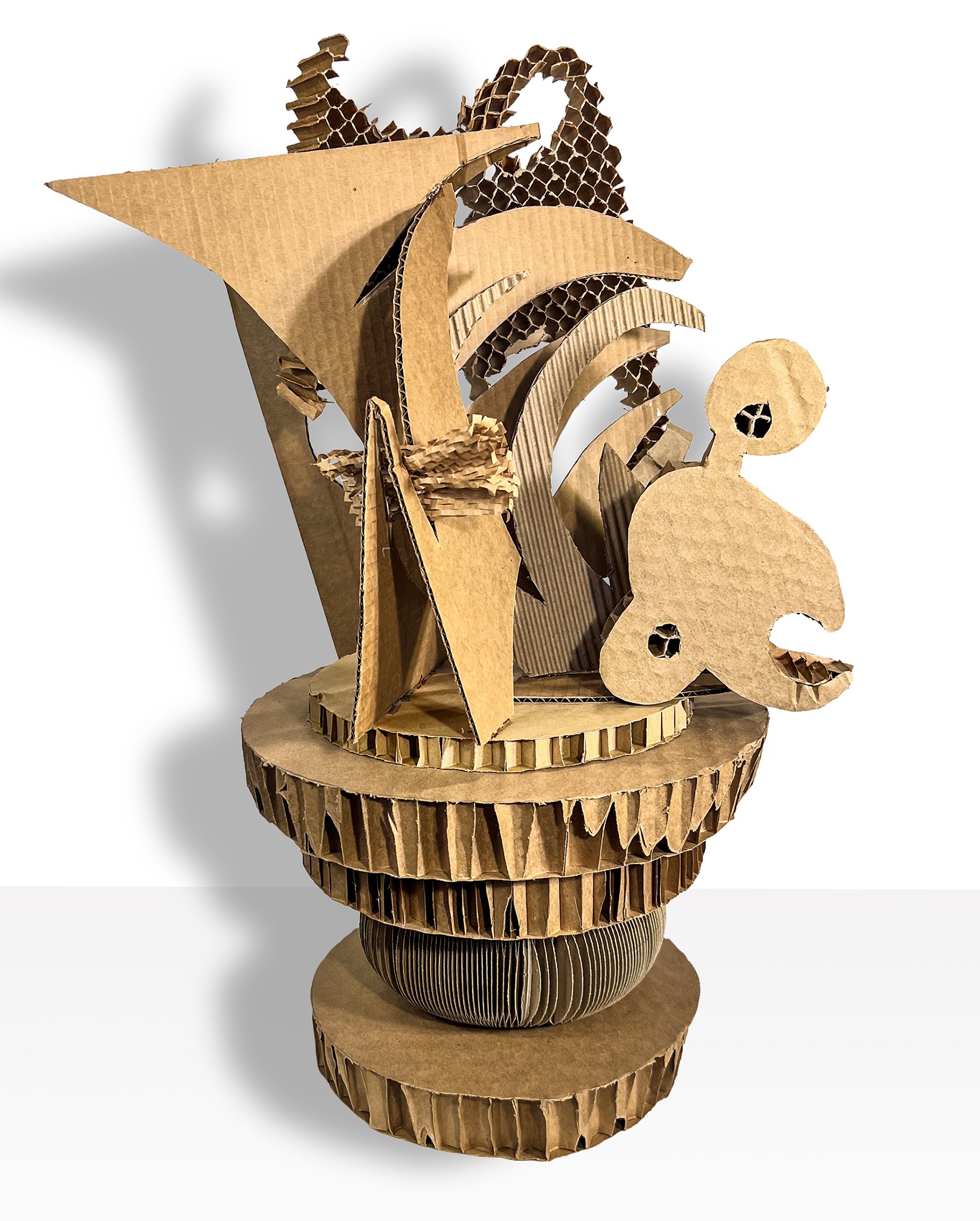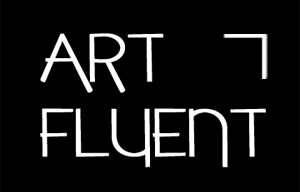
Remnants 2, honeycomb corrugate, cardboard, metal
-Judith, we'd love to hear your story and how you got to where you are today, both personally and as an artist.
As an artist I am known for my abstract imagery and use of unusual materials such as mylar, cardboard, styrofoam, homosote and foam core, etc. My work spans a range of media, from sculpture, painting, drawing and collage. When at Yale for graduate school I was under the guidance (and friendship) of Al Held. Our discussions helped me grow tremendously as an artist. While there I was a teaching assistant to Alice Neel. Her advice was to spend as much time as possible making art. I took that advice to heart.
After school I came to NYC and developed a large new body of work, drawings on mylar. I received several grants including an NEA, which gave me the support needed to concentrate on work. I made contact with dealers, curators and artists. Discussions abounded. Willard Gallery gave me my first show, as a 2-person show with Susan Rothenberg. That went well and I became a member of the gallery. I showed there for several years, I was on the cover of the Paris Review and written about in various magazines. At the same time, I was teaching at Mason Gross School of Art at Rutgers University.
After Willard (which closed several years later) I concentrated on new work. I was making wall sculptures that were lines in space or drawings in 3D. Several things rang true for me no matter how much my work changed, I revered drawing as pure thinking and loved to define my environment and the cosmic forces in 3D. I had a show at Cirrus Gallery in LA curated by Richard Armstrong. Teaching at Rutgers was not giving me enough to live on so I got a full time job. Several years later I had a baby. I was lucky to have a supportive life partner who took on many roles to allow me to spend time in the studio. I was making wall sculptures of laminated homosote with painted surfaces.
In the next few years, I had a solo show and was included in several group shows. My life partner and I developed our own business to make a living. I started working on small paintings and very large drawings. I showed my work in various group shows. We had our business for 27 years and through those years my artwork grew and went through several transformations. Foam core wall sculpture, some cardboard pieces, paintings, and large drawings. Devoted myself to making cardboard sculptures around 2014. In 2023 I was included in 8 group shows. My work continues to use recycled materials and I look forward to making my tangled spaces and structures as a kind of improvisational universe.

Forced Perspective, honeycomb corrugate, cardboard, foam clay
-In your work, you discuss using materials from our "throw-away society." How do you select those materials, and what qualities do you look for?
I would walk out of my home and the landscape is a sea of cardboard. The detritus materials I call the ‘Amazon Generation’ debris. The streets and garbage cans overflowed with it. I was intrigued by the various textures, thicknesses and raw elegance of cardboard and saw a smorgasbord of art materials. I started to collect those materials and dumpster dive for them. I loved the idea of using recycled material for sculpture which are not traditionally used. Cardboard and found materials are shape shifters for my creative use. My selections rely on diverse textures, thicknesses, colors, etc. The more varied the texture and thickness the more interesting to me. The throw away quality of cardboard reflects an almost organic life span from development through deterioration. With the cardboard, my work resides in a space between solidity and fragility.

Magic of the Familiar, honeycomb corrugate, cardboard
-You mention that making art is a working process for you. Can you elaborate on how your art-as-process approach influences the final outcome of your sculptures?
The sense of an idea starts the process, then, as it takes shape, the whole experience takes over. I am moving parts/cutouts around. My process is instinctual. I create deliberately ambiguous shapes then make connections with those shapes. I freely use off-kilter and abrupt transitions to create a sense of flow, fluctuation, and humor. I try and explore materials with spontaneity. I am elevating the humble corrugate to creative abstract forms. They morph into irregular shapes that question life's ongoing issues concerning permanence & impermanence. My sculptures are attempting to be many things at once. There is a state of perpetual confusion, a resonating of the landscape/buildings around me and the visceral play of shapes and textures. In the making of art, I discover my humanity, which often becomes obscured amid a life that is moving too fast and filled with too much. But the work itself takes me places, suddenly and without reason, and I delight in the things I do not plan.

Remnants, honeycomb corrugate, cardboard, metal
-How do you hope your choice of using recycled materials will impact viewers' perceptions of waste and environmental responsibility?
Sustainability improves the quality of our lives, protects our ecosystems, and preserves natural resources for future generations. I do want to be thought provoking. Promoting recycling helps create better environments for us to thrive. I hope my work is a window for people to connect with this whole issue from thinking about it to experiencing it. My work should make them think of the open-ended possibilities of repurposing materials. Viewers may see me as just a rescuer of recyclables, but I also have a real love of these materials. I think that is evident. The raw elegance of various kinds of corrugate convey the strangeness, vulnerability, and complicated beauty of contemporary life. I am asking the art world ‘What Gives Art Value?’. My sculptures live as a sign of cultural excess.

Pillar of Creation, honeycomb corrugate, cardboard, metal
-What’s the best way for someone to check out your work and provide support?
My website is a good way to check out my work. www.judithornstein.com. There you will see my contact page. Feel free to email me through the website.
Also, follow me on Instagram @jornsteinart. You can message me through Instagram as well. And of course, the best way to support me is to purchase works, all works on the website are for sale.
Statement
In the making of art I discover my humanity, which often becomes obscured amid a life that is moving too fast and filled with too much. Making art is a working process, every day, that engulfs my whole being. My work is very much about the process. The work itself takes me places, suddenly and without reason and I delight in the things I do not plan.
I’m an abstract artist whose imagery melds poetic impulse with networks of shapes and forms. My current work recycles the detritus materials from the ‘Amazon Generation’. Various kinds of honeycomb, fluted and flat corrugate that are the familiar by-products of our throw-away society. Mundane objects are my tools, shapeshifters for my creative use. Cardboard imbues my sculptures with the conflict of permanence and impermanence. Humble materials, like corrugate, bring up the issue of what gives art value. They live as a sign of cultural excess. My work reside in a space between solidity and fragility. The throw away quality of cardboard reflects an almost organic life span from development thru deterioration.
My sculptures are put together in a tangled space as a kind of improvisational universe. That is process at work. It is a process that overwhelms my thinking and instinctive reasoning. I want the work to be fun and humorous as well. Of course sustainability cannot be ignored as a strong message. Viewers may see me as just a rescuer of recyclables but I also have a real love of these materials. Cardboard has this raw elegance and organic shapes with various textures give reference to my humanity and sensuality.

Staged, honeycomb corrugate, cardboard
Bio

Dream Logic, honeycomb corrugate, cardboard, metal
Judith Ornstein is an artist known for her abstract imagery and use of unusual materials like mylar, styrofoam, homesite and corrugate. Her work spans a range of media, including sculpture, painting, drawing and collage. She graduated with an MFA from Yale University and BFA from Philadelphia College of Art. Ornstein first exhibited at Willard Gallery in a 2 person show with Susan Rothenberg, followed by several solo shows at Willard over the next few years. She has also had solo exhibitions at Vibeke Levy Fine Art (NYC), 718 Gallery (Brooklyn), Cirrus Gallery (LA, curated by Richard Armstrong) and Douglas College Art Gallery (Rutgers NJ).
Ornstein has been included in group shows at Willard Gallery, The Hall BK (Exchanging Visions), NYC We Create, Baskerville & Watson, H.F. Manes Gallery (NYC), Antoinette Torrens Gallery (NYC), Amos Eno Gallery, Kavanaugh Gallery, Las Laguna Gallery, BWAC (BK), WO Art and more. She’s the feature artist at EcoArt blog in 2021. She was in 9 group shows in 2023 including Moshava Art, Prince Street Gallery, Ely Center for Contemporary Art, LBI Foundation, BWAC, etc.
Judith has extensive interviews in the September 2021 issues of both Art Reveal Magazine and Alkali Art Magazine. Her work has been on the cover of the Paris Review and reviewed in Artforum, Arts Magazine, The Los Angeles Times, GQ, Village Voice, Vast Art Magazine and more.
